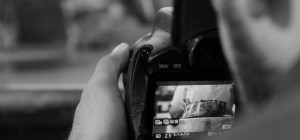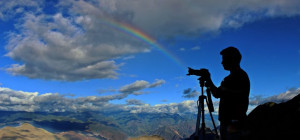 Beautiful waves crashing on the shore isn’t an uncommon sight at the beach. Large waves breaking on the shore is quite wonderful to watch. Photographing them is even more rewarding.
Beautiful waves crashing on the shore isn’t an uncommon sight at the beach. Large waves breaking on the shore is quite wonderful to watch. Photographing them is even more rewarding.
Photographing waves isn’t as simple as the other photography techniques. It requires a lot of patience, the right equipment and enough preparation to get the best shot. A large part of photographing waves involves being at the right place at the right time.
It may take a while to perfect the technique of capturing the combination of the powerful waves hitting the shore and the calm water cascading over the rocks. The good news is, we have a few tricks to get you there in no time. Let’s take a look.
Understand the Subject
Each wave is unique. The entire seascape is never the same for two different waves. Even the light conditions change frequently. Therefore, you need to track the waves for some time before you decide to shoot.
A wave is constantly in motion. Identify the type of waves you wish to shoot. For example, you can decide to shoot large waves or mild ones. The best way to capture waves is by interpreting what’s in front of you and trying to shoot what appeals to you.
Carry the Right Equipment
Since you will be working with slow shutter speeds, your camera could be prone to camera shake. This could make the picture blurry. To avoid this, it always wise to carry a sturdy tripod with you for wave photography.
The camera shake can be reduced considerably by using lenses with image stabilization. In addition to that, a remote shutter release can also come in handy while taking photos of waves.
Since you will be shooting near the water, it is important to use the right gear for protecting your camera. Carry a cleaning cloth to wipe off the water and sand from the equipment. A protective housing or cover can be useful to keep your camera clean.
Camera Specifications
You can choose a shutter speed of around 1/4th of a second to shoot the best photos of waves. If you choose a slower shutter speed than that, the outcome could be a little abstract. Adjust the ISO setting accordingly.
However, while choosing the shutter speed, ensure that you do not overexpose the image. If you are not careful, this could end up ruining your shot. You can consider using a neutral density filter to reduce the light.
Timing is Vital
The time you choose to shoot the photographs of waves can contribute a lot to the picture. First of all, the light condition varies with timing. Therefore, you will be able to capture different levels of illumination at different times of the day.
Cloudy skies can have a stunning effect on the photos since these act as natural light diffusers. Additionally, choosing to shoot in the wee hours of the morning means that there will be fewer people at the beach. This will help you get clear shots of the waves.
Add Texture
You can make the photographs of the waves interesting by adding a little texture. For example, capturing seaweed floating in the water may add uniqueness and texture to the photos. These could also form an interesting pattern on the waves.
Be Prepared
You never know when a stunning scope of photographing waves may materialize. Therefore, it is important to carry your photography gear with you every time you travel to the beach.
It is essential to get the basics right while shooting photographs of waves. Therefore, enough practice is crucial. You can participate in various workshops to learn the tricks of the trade in simple methods. For example, if you live in Abu Dhabi, you can acquire a variety of valuable skills from photo workshops in Abu Dhabi.
You should understand your camera’s abilities and make the most of these to shoot good photos.
Scout the location for a good spot. Try to find an angle that adds uniqueness to the photos that you take. Keep in mind that while photographing waves, patience is key.
A little creativity goes a long way in producing amazing outcomes. Do not forget to experiment and have fun while shooting. These tips will help you capture amazing shots of waves.
Contributed by: http://gulfphotoplus.com/







